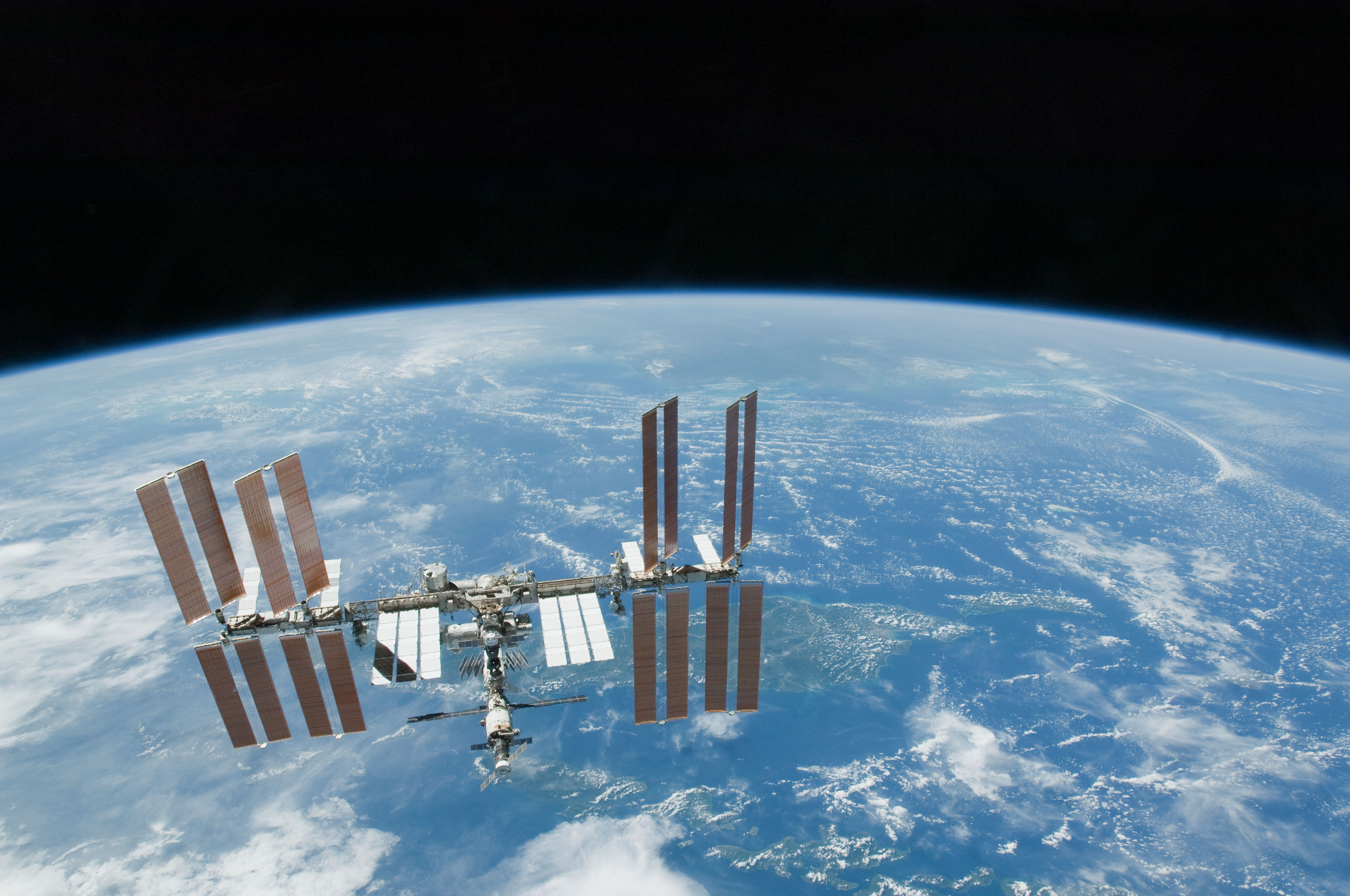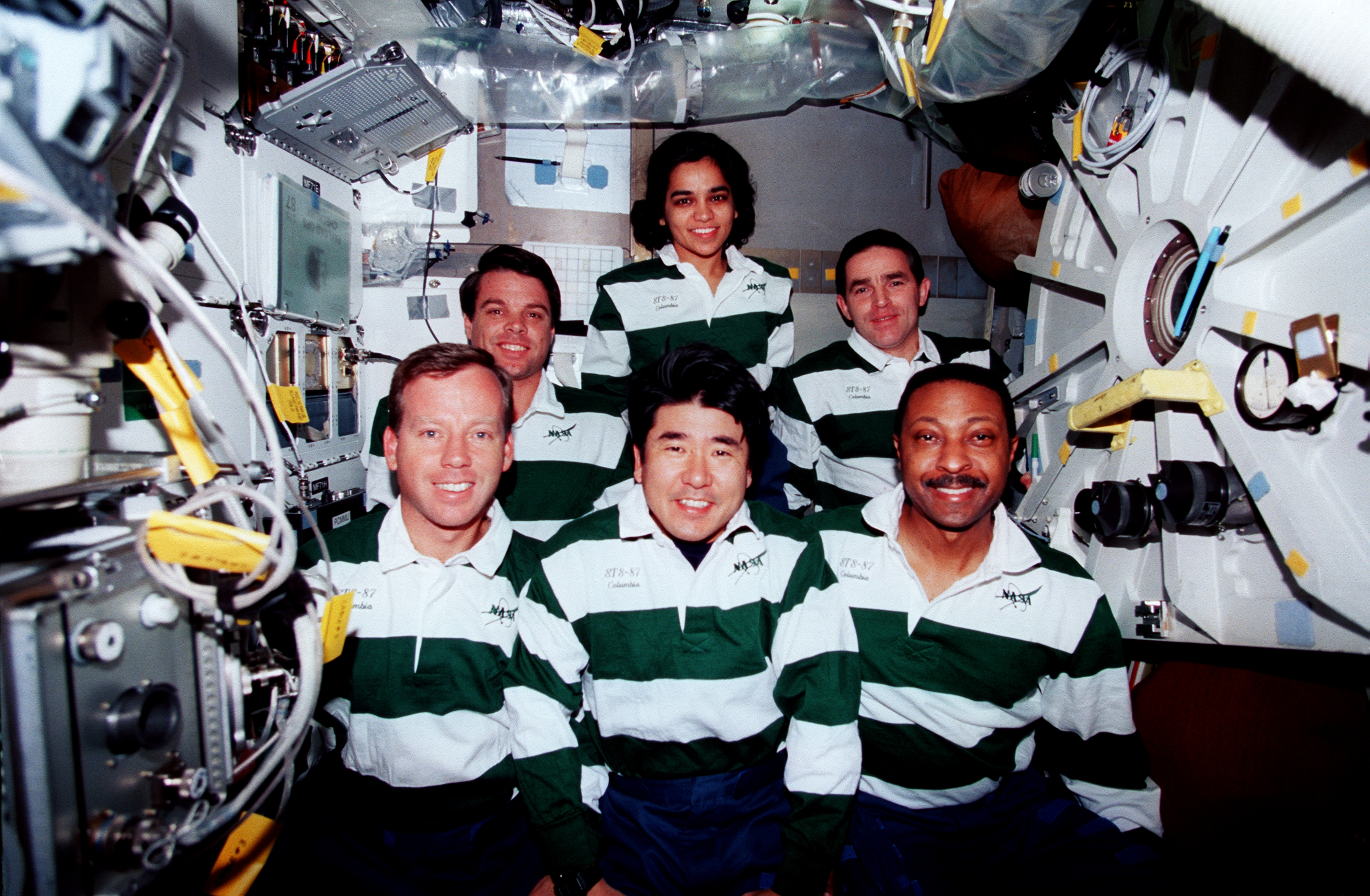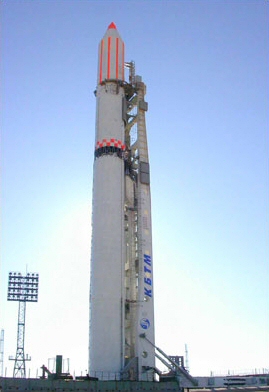|
STS-87 Launch
STS-87 was a Space Shuttle mission launched from Launch Complex 39B of the Kennedy Space Center on 19 November 1997. It was the 88th flight of the Space Shuttle and the 24th flight of '' Columbia''. The mission goals were to conduct experiments using the United States Microgravity Payload (USMP-4), conduct two EVAs, and deploy the SPARTAN-201 experiment. This mission marked the first time an EVA was performed from ''Columbia''. An EVA from ''Columbia'' was originally planned for STS-5 in 1982 but was canceled due to spacesuit problems. It also marked the first EVA conducted by a Japanese astronaut, Takao Doi. Crew Backup crew Space walks *'' Scott and Doi'' – EVA 1 *EVA 1 Start: 25 November 1997 – 00:02 UTC *EVA 1 End: 25 November 1997 – 07:45 UTC *Duration: 7 hours, 43 minutes *'' Scott and Doi'' – EVA 2 *EVA 2 Start: 3 December 1997 – 09:09 UTC *EVA 2 End: 3 December 1997 – 14:09 UTC *Duration: 4 hours, 59 minutes Mission highlights STS-87 flew the United Stat ... [...More Info...] [...Related Items...] OR: [Wikipedia] [Google] [Baidu] |
Space Transportation System
The Space Transportation System (STS), also known internally to NASA as the Integrated Program Plan (IPP), was a proposed system of reusable crewed space vehicles envisioned in 1969 to support extended operations beyond the Apollo program. (NASA appropriated the name for its Space Shuttle Program, the only component of the proposal to survive Congressional funding approval). The purpose of the system was two-fold: to reduce the cost of spaceflight by replacing the current method of launching capsules on expendable rockets with reusable spacecraft; and to support ambitious follow-on programs including permanent orbiting space stations around Earth and the Moon, and a human landing mission to Mars. In February 1969, President Richard Nixon appointed a Space Task Group headed by Vice President Spiro Agnew to recommend human space projects beyond Apollo. The group responded in September with the outline of the STS, and three different program levels of effort culminating with a ... [...More Info...] [...Related Items...] OR: [Wikipedia] [Google] [Baidu] |
Space Shuttle Columbia
Space Shuttle ''Columbia'' (OV-102) was a Space Shuttle orbiter manufactured by Rockwell International and operated by NASA. Named after the Columbia Rediviva, first American ship to circumnavigate the upper North American Pacific coast and the Columbia (personification), female personification of the United States, ''Columbia'' was the first of five Space Shuttle orbiters to fly in space, debuting the Space Shuttle, Space Shuttle launch vehicle on STS-1, its maiden flight in April 1981. As only the second full-scale orbiter to be manufactured after the Approach and Landing Tests, Approach and Landing Test vehicle ''Space Shuttle Enterprise, Enterprise'', ''Columbia'' retained unique features indicative of its experimental design compared to later orbiters, such as test instrumentation and distinctive black Chine (aeronautics), chines. In addition to a heavier fuselage and the retention of an internal airlock throughout its lifetime, these made ''Columbia'' the heaviest of the fi ... [...More Info...] [...Related Items...] OR: [Wikipedia] [Google] [Baidu] |
Microgravity
The term micro-g environment (also μg, often referred to by the term microgravity) is more or less synonymous with the terms ''weightlessness'' and ''zero-g'', but emphasising that g-forces are never exactly zero—just very small (on the International Space Station (ISS), for example, the small g-forces come from tidal effects, gravity from objects other than the Earth, such as astronauts, the spacecraft, and the Sun, air resistance, and astronaut movements that impart momentum to the space station). The symbol for microgravity, ''μg'', was used on the insignias of Space Shuttle flights STS-87 and STS-107, because these flights were devoted to microgravity research in low Earth orbit. The most commonly known microgravity environment can be found aboard the ISS which is located in low-earth orbit at an altitude of around 400 km, orbiting Earth approximately 15 times per day in what is considered free fall. The effects of free fall also enable the creation of short-du ... [...More Info...] [...Related Items...] OR: [Wikipedia] [Google] [Baidu] |
Huntsville, Alabama
Huntsville is a city in Madison County, Limestone County, and Morgan County, Alabama, United States. It is the county seat of Madison County. Located in the Appalachian region of northern Alabama, Huntsville is the most populous city in the state. Huntsville was founded within the Mississippi Territory in 1805 and became an incorporated town in 1811. When Alabama was admitted as a state in 1819, Huntsville was designated for a year as the first capital, before that was moved to more central settlements. The city developed across nearby hills north of the Tennessee River, adding textile mills in the late nineteenth century. Its major growth has taken place since World War II. During the war, the Army established Redstone Arsenal near here with a chemical weapons plant, and nearby related facilities. After the war, additional research was conducted at Redstone Arsenal on rockets, followed by adaptations for space exploration. NASA's Marshall Space Flight Center, the Unit ... [...More Info...] [...Related Items...] OR: [Wikipedia] [Google] [Baidu] |
Marshall Space Flight Center
The George C. Marshall Space Flight Center (MSFC), located in Redstone Arsenal, Alabama (Huntsville postal address), is the U.S. government's civilian rocketry and spacecraft propulsion research center. As the largest NASA center, MSFC's first mission was developing the Saturn launch vehicles for the Apollo program. Marshall has been the lead center for the Space Shuttle main propulsion and external tank; payloads and related crew training; International Space Station (ISS) design and assembly; computers, networks, and information management; and the Space Launch System (SLS). Located on the Redstone Arsenal near Huntsville, MSFC is named in honor of General of the Army George C. Marshall. The center contains the Huntsville Operations Support Center (HOSC), also known as the International Space Station Payload Operations Center. This facility supports ISS launch, payload, and experiment activities at the Kennedy Space Center. The HOSC also monitors rocket launches from Cape ... [...More Info...] [...Related Items...] OR: [Wikipedia] [Google] [Baidu] |
Spacelab
Spacelab was a reusable laboratory developed by European Space Agency (ESA) and used on certain spaceflights flown by the Space Shuttle. The laboratory comprised multiple components, including a pressurized module, an unpressurized carrier, and other related hardware housed in the Shuttle's cargo bay. The components were arranged in various configurations to meet the needs of each spaceflight. Spacelab components flew on a total of about 32 Shuttle missions, depending on how such hardware and missions are tabulated. Spacelab allowed scientists to perform experiments in microgravity in geocentric orbit. There was a variety of Spacelab-associated hardware, so a distinction can be made between the major Spacelab program missions with European scientists running missions in the Spacelab habitable module, missions running other Spacelab hardware experiments, and other Space Transportation System (STS) missions that used some component of Spacelab hardware. There is some variation ... [...More Info...] [...Related Items...] OR: [Wikipedia] [Google] [Baidu] |
STS-87 Traditional In-flight Crew Portrait
STS-87 was a Space Shuttle mission launched from Launch Complex 39B of the Kennedy Space Center on 19 November 1997. It was the 88th flight of the Space Shuttle and the 24th flight of ''Columbia''. The mission goals were to conduct experiments using the United States Microgravity Payload (USMP-4), conduct two EVAs, and deploy the SPARTAN-201 experiment. This mission marked the first time an EVA was performed from ''Columbia''. An EVA from ''Columbia'' was originally planned for STS-5 in 1982 but was canceled due to spacesuit problems. It also marked the first EVA conducted by a Japanese astronaut, Takao Doi. Crew Backup crew Space walks *'' Scott and Doi'' – EVA 1 *EVA 1 Start: 25 November 1997 – 00:02 UTC *EVA 1 End: 25 November 1997 – 07:45 UTC *Duration: 7 hours, 43 minutes *'' Scott and Doi'' – EVA 2 *EVA 2 Start: 3 December 1997 – 09:09 UTC *EVA 2 End: 3 December 1997 – 14:09 UTC *Duration: 4 hours, 59 minutes Mission highlights STS-87 flew the United Sta ... [...More Info...] [...Related Items...] OR: [Wikipedia] [Google] [Baidu] |
AERCam Sprint
The Autonomous Extravehicular Activity Robotic Camera Sprint (AERCam Sprint) is a NASA experiment to demonstrate the use of a prototype free-flying television camera. It was tested on STS-87 and could also be used for remote inspections of the exterior of the International Space Station. The AERCam Sprint free-flyer is a , 35-pound (16 kg) sphere that contains two television cameras, an avionics system and 12 small nitrogen gas-powered thrusters. The sphere, which looks like an oversized soccer ball, was released by Mission Specialist Winston E. Scott during the STS-87 spacewalk and flew freely in the forward cargo bay for about 30 minutes. The free-flyer was remotely controlled by Pilot Steven W. Lindsey from the Shuttle's aft flight deck using a hand controller, two laptop computers and a window-mounted antenna. The AERCam is designed to fly very slowly at a rate of less than one-quarter of a foot per second. Remote control of the AERCam is performed through two-way UHF radio ... [...More Info...] [...Related Items...] OR: [Wikipedia] [Google] [Baidu] |
STS-87 Launch
STS-87 was a Space Shuttle mission launched from Launch Complex 39B of the Kennedy Space Center on 19 November 1997. It was the 88th flight of the Space Shuttle and the 24th flight of '' Columbia''. The mission goals were to conduct experiments using the United States Microgravity Payload (USMP-4), conduct two EVAs, and deploy the SPARTAN-201 experiment. This mission marked the first time an EVA was performed from ''Columbia''. An EVA from ''Columbia'' was originally planned for STS-5 in 1982 but was canceled due to spacesuit problems. It also marked the first EVA conducted by a Japanese astronaut, Takao Doi. Crew Backup crew Space walks *'' Scott and Doi'' – EVA 1 *EVA 1 Start: 25 November 1997 – 00:02 UTC *EVA 1 End: 25 November 1997 – 07:45 UTC *Duration: 7 hours, 43 minutes *'' Scott and Doi'' – EVA 2 *EVA 2 Start: 3 December 1997 – 09:09 UTC *EVA 2 End: 3 December 1997 – 14:09 UTC *Duration: 4 hours, 59 minutes Mission highlights STS-87 flew the United Stat ... [...More Info...] [...Related Items...] OR: [Wikipedia] [Google] [Baidu] |
Yaroslav Pustovyi
Yaroslav Pustovyi (born 29 December 1970) is a former Ukrainian astronaut. Pustovyi was one of the first astronauts selected by the State Space Agency of Ukraine in 1996. Although he was a backup payload specialist on the 1997 NASA space mission STS-87, he did not fly on the mission. Pustovyi was awarded the Order of Merit for Ukraine in 1998 and competed for the Ansari X Prize in 2003 on the Canadian Arrow team. Early life and education On 29 December 1970, Pustovyi was born in Kostroma, Russia and grew up in Kyiv, Ukraine. For his post-secondary education, he graduated from the A.F. Mozhaysky Military-Space Academy in 1993 with a Master of Science. Specializing in radio science, Pustovyi additionally earned a Doctor of Philosophy from the National University of Kharkiv in 1997. Career Pustovyi started his career as a first lieutenant in the Ukrainian Air Force during the 1990s. While attending university at Kharkiv, he worked at the National Academy of Sciences of Ukraine as ... [...More Info...] [...Related Items...] OR: [Wikipedia] [Google] [Baidu] |
National Space Agency Of Ukraine
The State Space Agency of Ukraine (SSAU; uk, Державне космічне агентство України, ''Derzhavne kosmichne ahentstvo Ukrayiny'', ДКАУ, ''DKAU'') is the Ukrainian government agency responsible for space policy and programs. Along with the Ukrainian Defense Industry and the Antonov Aeronautical Scientific-Technical Complex, it is a major state complex of the national defense industry of Ukraine.The agency was formed in 1992 based on the Soviet space program infrastructure remaining in Ukraine following the dissolution of the Soviet Union. The State Space Agency of Ukraine does not specialize in crewed astronautical programs. It is the second of two direct Soviet space program descendants. The Ukrainian city of Dnipro, also known as the Rocket City, during Soviet period was one of the Soviet space rocket manufacturing centers, while the cities of Kyiv and Kharkiv provided various other technological support. Those remnants of the Soviet space ... [...More Info...] [...Related Items...] OR: [Wikipedia] [Google] [Baidu] |
Japan Aerospace Exploration Agency
The is the Japanese national air and space agency. Through the merger of three previously independent organizations, JAXA was formed on 1 October 2003. JAXA is responsible for research, technology development and launch of satellites into orbit, and is involved in many more advanced missions such as asteroid exploration and possible human exploration of the Moon. Its motto is ''One JAXA'' and its corporate slogan is ''Explore to Realize'' (formerly ''Reaching for the skies, exploring space''). History On 1 October 2003, three organizations were merged to form the new JAXA: Japan's Institute of Space and Astronautical Science (ISAS), the National Aerospace Laboratory of Japan (NAL), and National Space Development Agency of Japan (NASDA). JAXA was formed as an Independent Administrative Institution administered by the Ministry of Education, Culture, Sports, Science and Technology (MEXT) and the Ministry of Internal Affairs and Communications (MIC). Before the merger, ISA ... [...More Info...] [...Related Items...] OR: [Wikipedia] [Google] [Baidu] |

.jpg)








